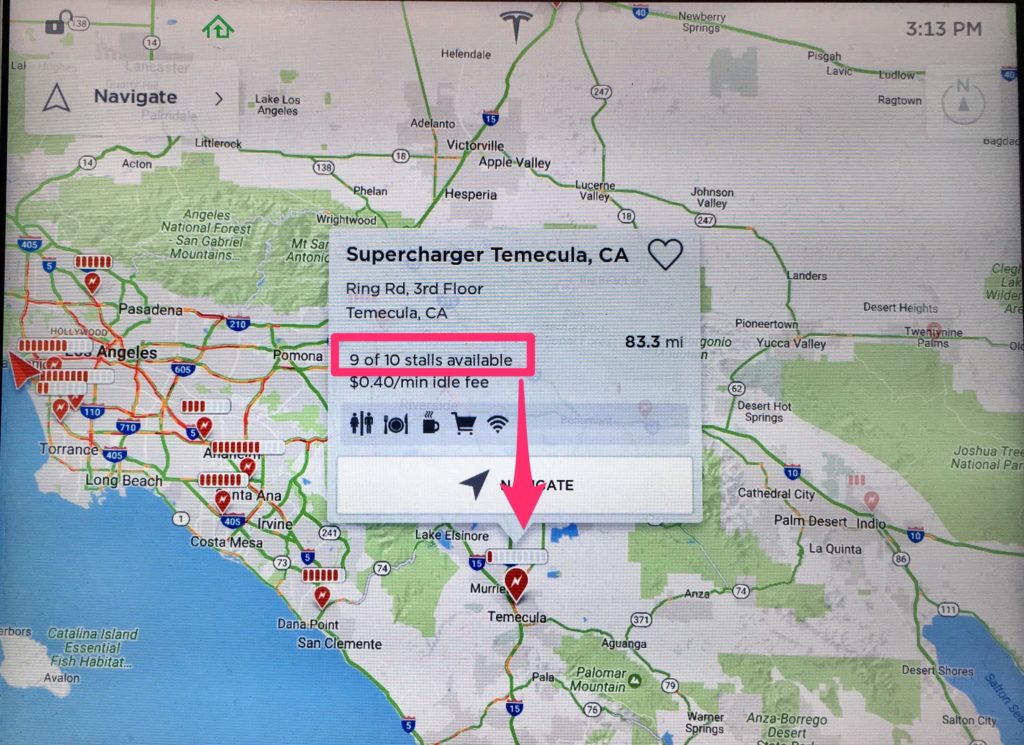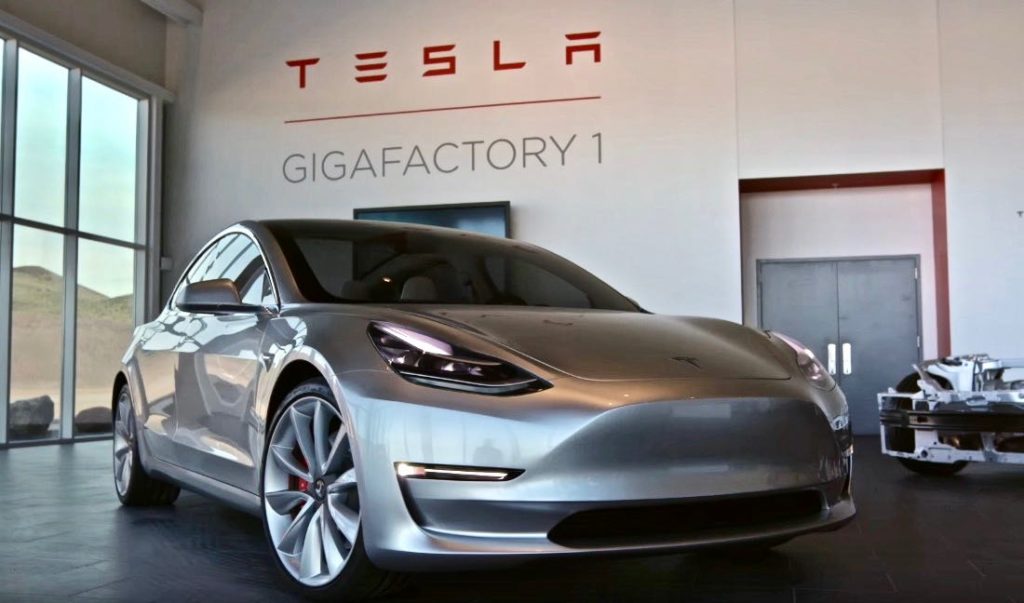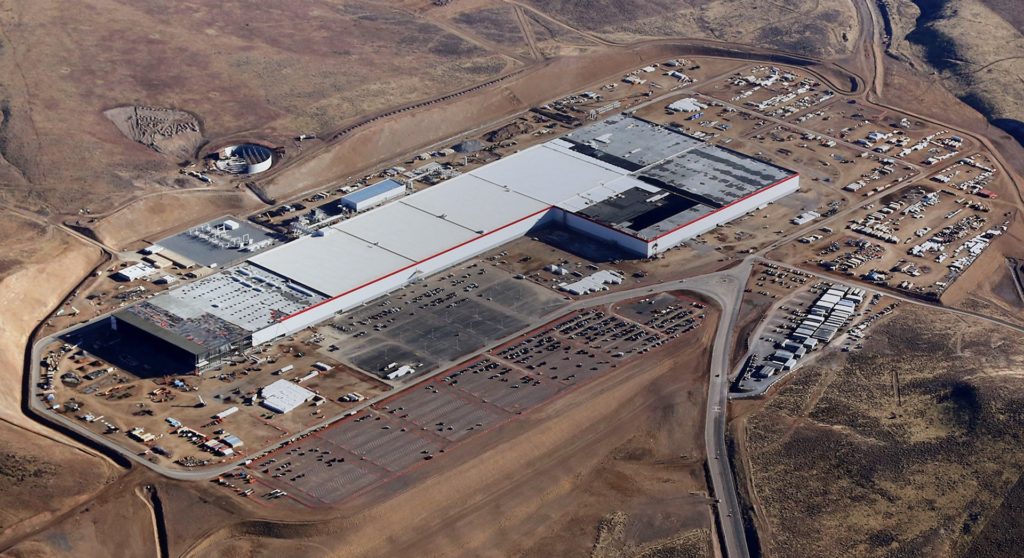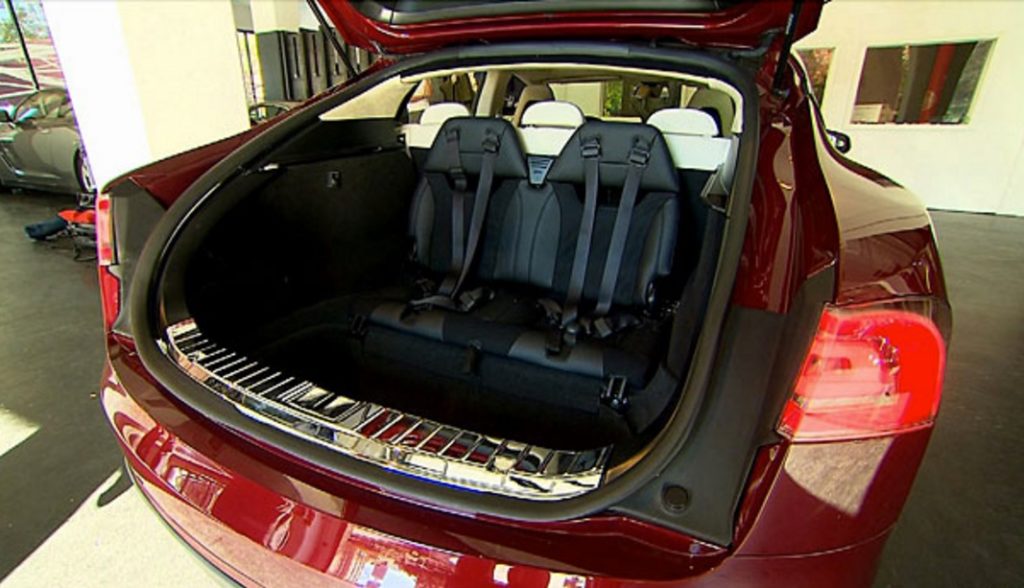News
Tesla Top 5 Week in Review: Model 3, Gigafactory, a brush with the law, and more
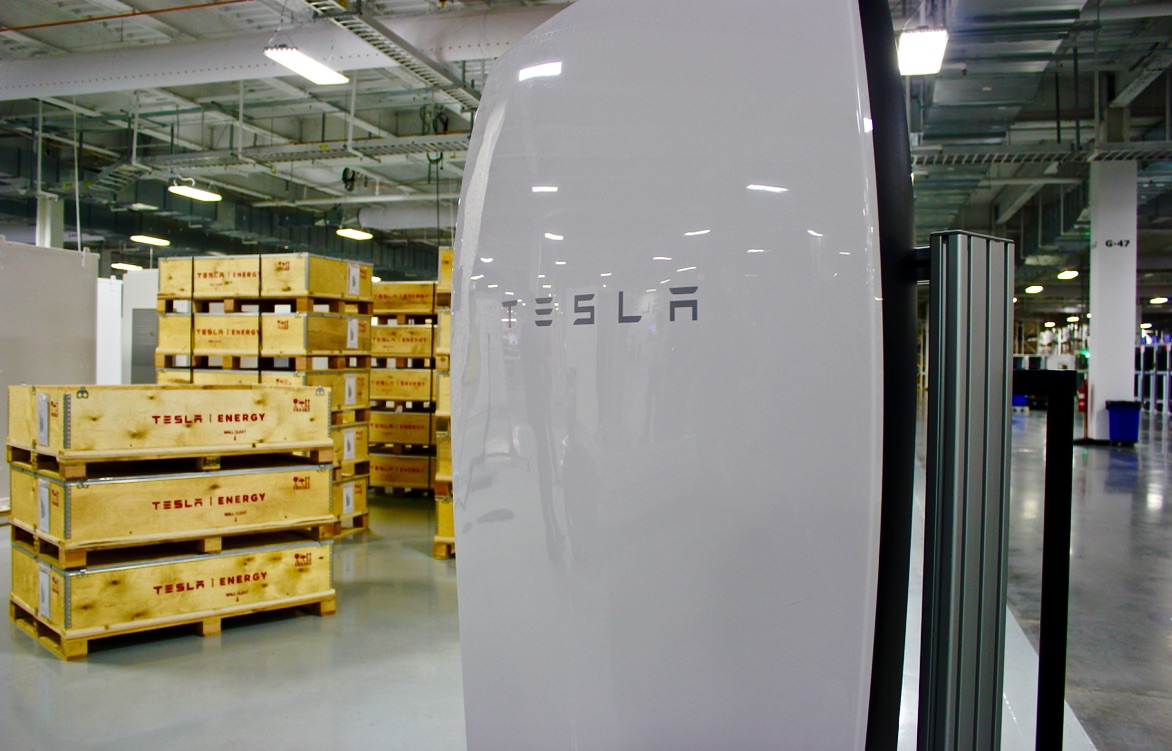
The Tesla Model 3 was big news again this week, as Tesla announced a February date for pilot production. Also, no longer will occupied Supercharger stations be so stress-inspiring, as Tesla has an onboard map update that shows Supercharger location availability. With news of a proposed federal import tax a topic of serious discussion, Tesla seemed on the winning side, with its prominent domestic manufacturing. The Gigafactory construction costs rose above $1 billion this week as noted through permits that Tesla filed. And a story emerged in which another Model S driver was detained by police who investigated reports of an abduction, only to quickly ascertain that rear-facing seats were the real culprit. Here are those stories in review.
Tesla to begin pilot production of Model 3 on February 20
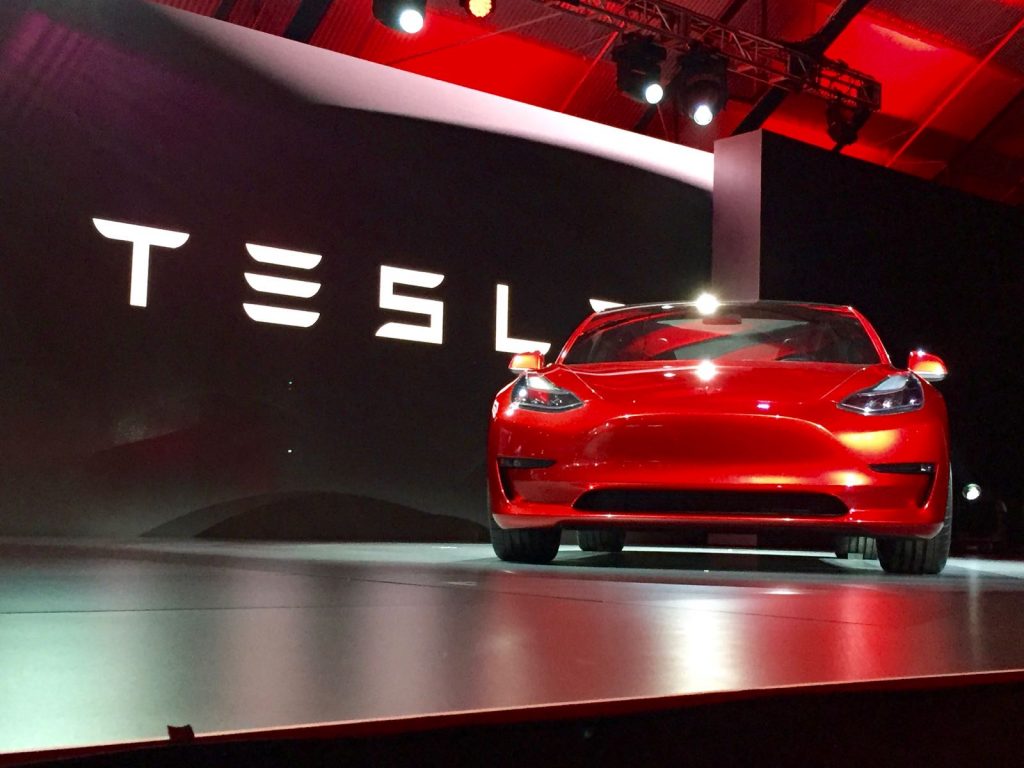
Red Tesla Model 3 at the vehicle unveiling event on March 31, 2016 from the company’s Hawthorne, CA Design Center.
As the more affordable all-electric vehicle in the Tesla catalog, the announcement of Model 3 pilot production staring on February 20 brought smiles to a lot of faces. The Model 3 will have a base price of $35,000, and that’s before government tax incentives. The appealing Model 3 price point is just a start: it will offer a range of at least 215 miles. The Model 3 pilot production creates a vehicle that is targeted for demonstration and evaluation, as pilot manufacturing is used to calibrate the assembly line, assess the car against design standards, and confirm quality of outside suppliers’ components. Some Model 3 pilot vehicles will be destined for safety crash tests, while others will generate media visibility. Importantly, strong demand for the Model 3 will push Tesla’s production capabilities, already exceeding 373,000 pre-orders.
Tesla unlocks real-time Supercharger occupancy data on vehicle map
Any Tesla owner will attest to the frustration that happens when you pull up to a Supercharger stall and find that it’s occupied. Knowing what’s happening at Superchargers ahead is newly improved. Tesla owners can now see Supercharger stall availability at a particular moment in time. Owners have already begun to report that data has appeared via the map app in the form of little bars over Supercharger stations that display availability. This is a very important component of Tesla’s overall goal to reduce range anxiety for its customers and to provide the smoothest and easiest vehicle experience of any currently available on the market.
Tesla on the winning end of proposed U.S. import tax
A new study suggests that Tesla would be well-positioned if a proposed federal tax on imports is implemented. Baum & Associates LLC determined that most automakers would need to add thousands of dollars to vehicle sticker prices to compensate for costs incurred with the import tax. Jaguar’s Land Rover would experience the worst case scenario with price increases near to $17,000, as it imports all its vehicles. Companies with significant domestic manufacturing would absorb only the smallest price increases among major automakers, with Ford accruing about $282 per vehicle and General Motors Co. at about $995. With its extensive domestic manufacturing, Tesla is the sole automaker that may be able to keep prices level. The study’s goals were to expose the relative impact of the tax plan on each automaker, according to Alan Baum, founder of Michigan’s Baum & Associates.
Tesla Gigafactory surpasses $1 billion in construction costs: Section D/E addendum filed
Tesla, Inc. has been granted a total of 153 building permits for its Gigafactory to date from the Storey County Community Development Department. In sum, the permits correlate with an estimated $1.03 billion in construction costs. Storey County remitted these permits after receiving $5.58 million in fees from Tesla. Twenty-nine permits are mentioned in an addendum, which total $542.65 million of construction work. Many of the other permits relate to the installation and anchoring of the equipment needed for the factory. Other permits include a nitrogen yard, a thermal energy storage tank, and the Panasonic equipment installed in Section B and C. In addition, the installation and expansion of the contractor accommodation indicated the number of construction workers on site has increased.
Tesla Model S rear-facing child seats lead to false kidnapping report
Tesla Model S owners who have opted for additional, rear-facing seats are aware that their size and location offers a fun and efficient place for youngsters to sit. The Sheriff’s Department in Newhall, California, who responded to reports of an abduction, didn’t have this same background knowledge about the Tesla Model S. It turns out that “it was not a kidnapping,” according to Lt. Rob Hahnlein, who spoke on behalf of the Sheriff’s Deparment, but, rather, an individual assisting a child into a Tesla. “The new Teslas have a weird back seat,” Hahnlein acknowledged, “and when they put the (child) in the back seat it looked like they were putting them in the trunk.” The Sheriff’s Department noted how they are obliged to investigate every kidnapping report until the situation is resolved. They also detained the Tesla driver at gun point with the child observing from the seats in question.

News
Tesla 2025 Holiday Update: Here’s what it includes, and what it’s missing
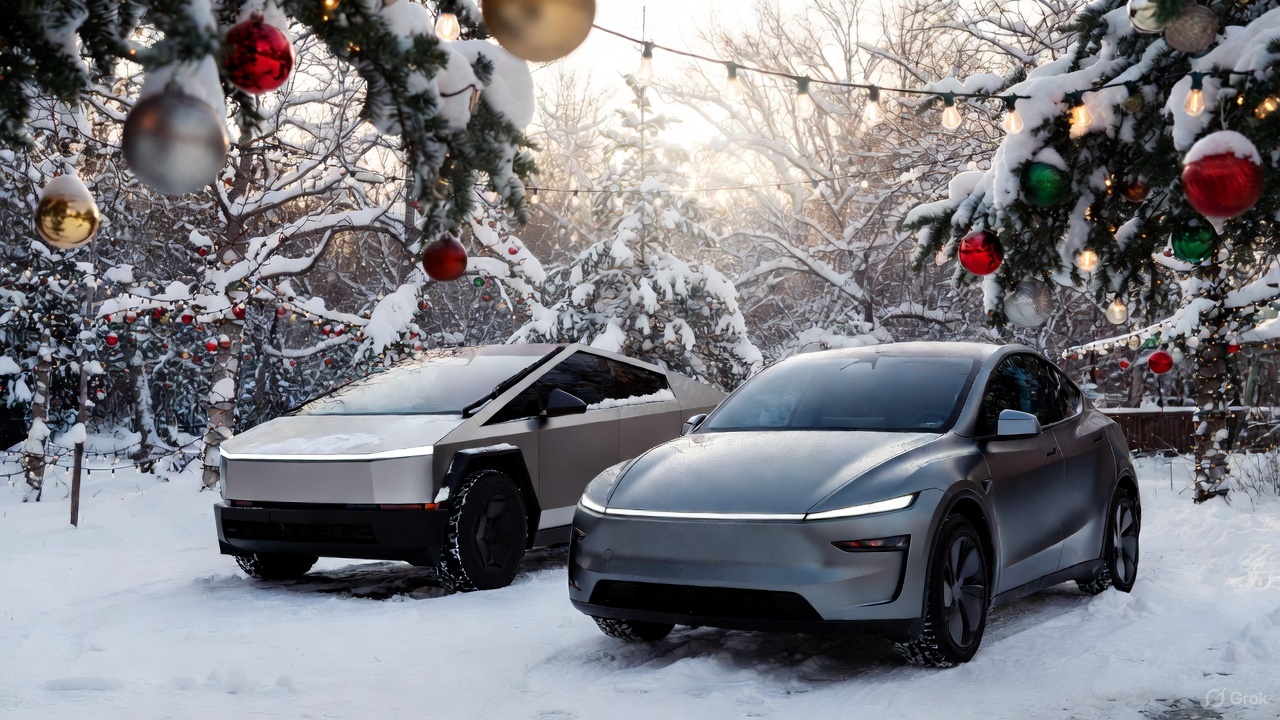
Tesla has finally announced the features for the 2025 Holiday Update, which includes a wide variety of new inclusions that are both functional and just for fun.
The new features are plentiful, but there were a handful of things we were expecting to see based on what we know. We don’t want to sound ungrateful, because there are a lot of great new things on the way with this update.
Here’s what was included:
Grok with Navigation Commands (Beta)
Grok will now have the ability to add and edit navigation destinations, which is a drastic improvement considering Tesla owners had to use their standard voice commands for this in the past.

The utilization of Grok will likely improve the navigation experience by offering some insight into your destination, including reviews and other points of interest nearby.
It will be enabled by using Grok’s “Assistant” personality.
Tesla Photobooth
“Turn your car into a photobooth! Take selfies from inside your Tesla & give yourself a makeover with fun filters, stickers, and emojis. Share with others right from the Tesla app.”
This feature will be available within the Toybox.
Dog Mode Live Activity
When using Dog Mode to keep your four-legged friend comfortable in the car, you’ll now be able to check in on them as it will share periodic snapshots of the cabin, along with live updates on temperature, battery, and climate conditions.
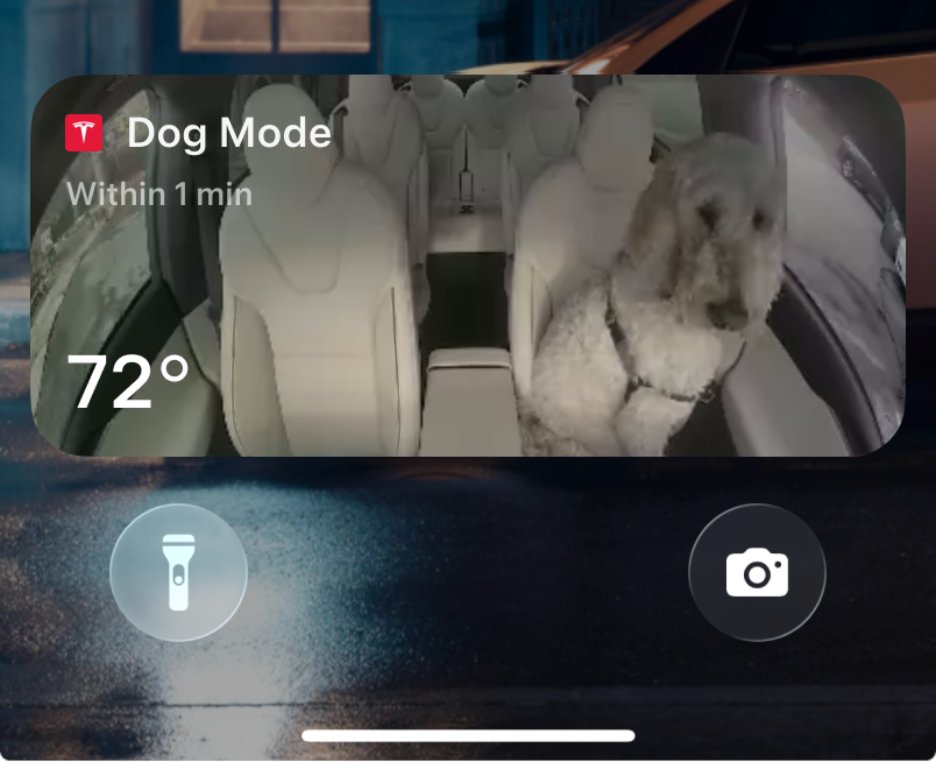
Dashcam Viewer Update
Dashcam clips are awesome, but they’re void of a lot of information, which could be useful in some instances, especially if there is an accident.
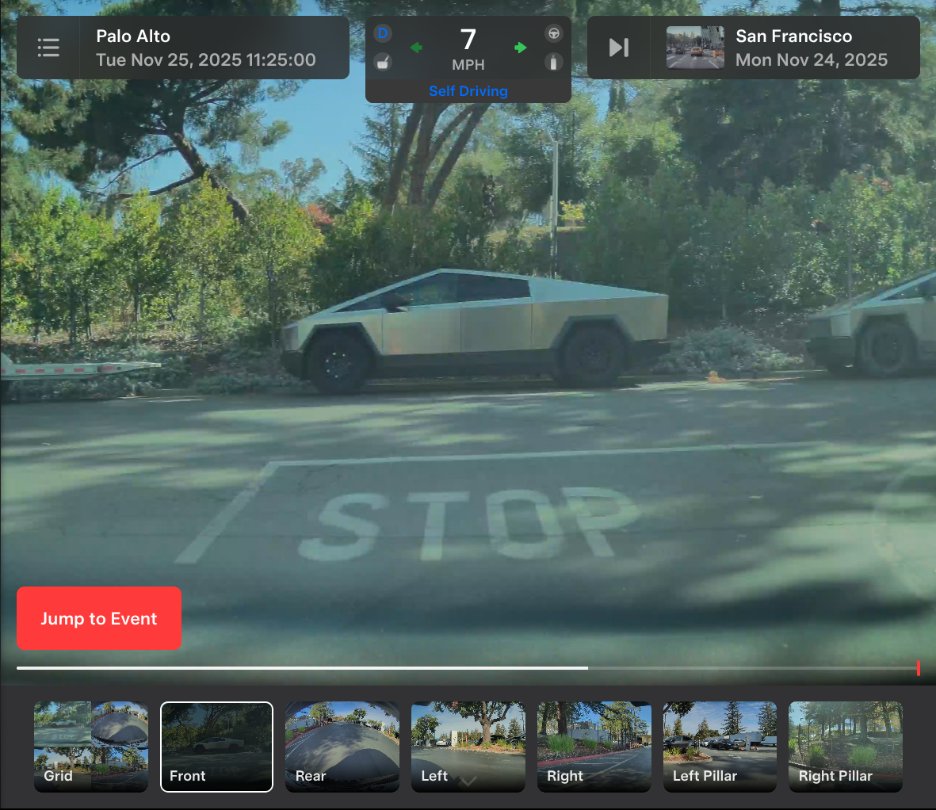
Now, there will be additional details included on each Dashcam clip, like speed, steering wheel angle, and Self-Driving state.
Santa Mode
New graphics, trees, and a lock chime are now available.
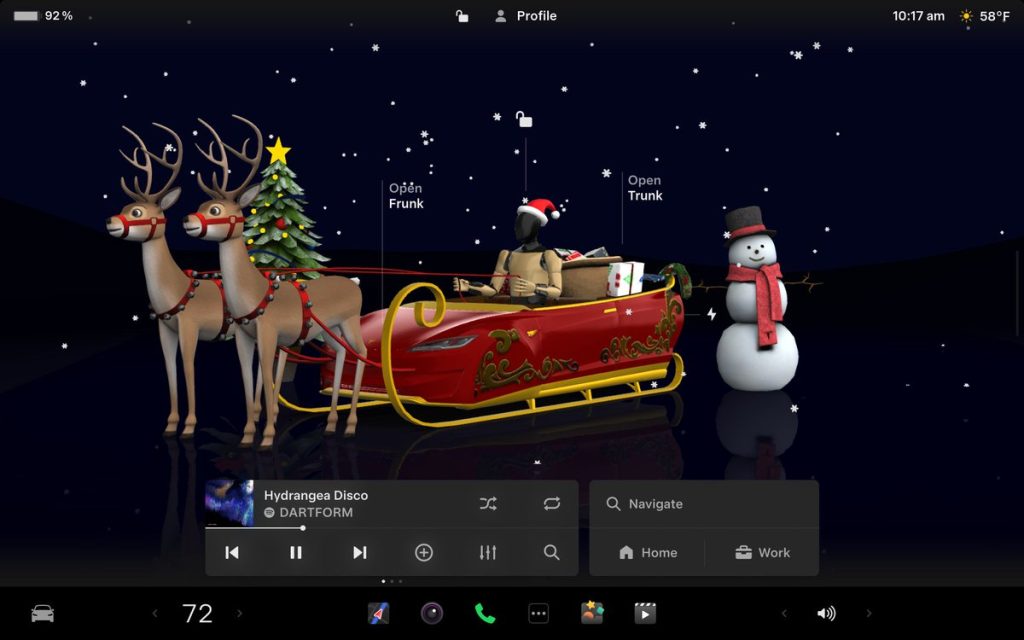
Light Show Update
A new Light Show, called Jingle Rush, will be available.
Custom Wraps and License Plates in Colorizer
Colorizer will now be known as “Paint Shop” in the Toybox. You will now be able to personalize your Tesla Avatar with window tints, custom wraps, and license plates. Preloaded designs will be available, but owners will be able to use their USB Flash Drives to create one that suits their style.
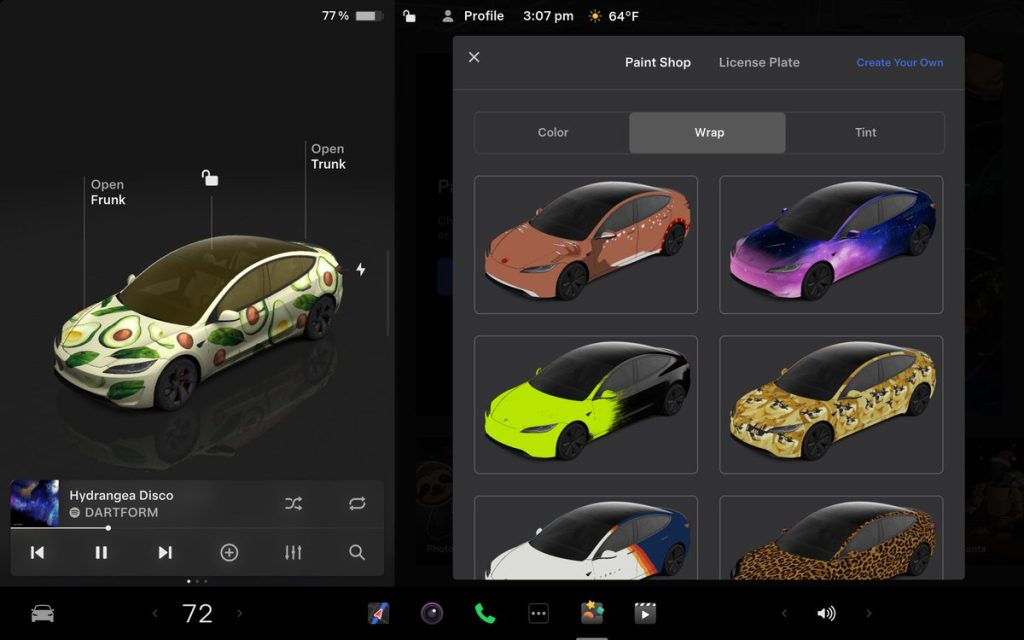
Navigation Improvements
Changing the order of your destinations will be easier through a new “Favorites” tab, and Home and Work can now be set by dropping a pin.
There will also be “Suggested Destinations,” which will be determined through recent trips and habits while parked.
Supercharger Site Map
Perhaps the most significant feature of the Holiday Update, Tesla is adding a 3D view of select Tesla Superchargers by tapping “View Site Map.”
When navigating to a location with this capability, the site layout, live occupancy, and nearby amenities will be available. Drivers will also be able to choose which stall to Supercharge.
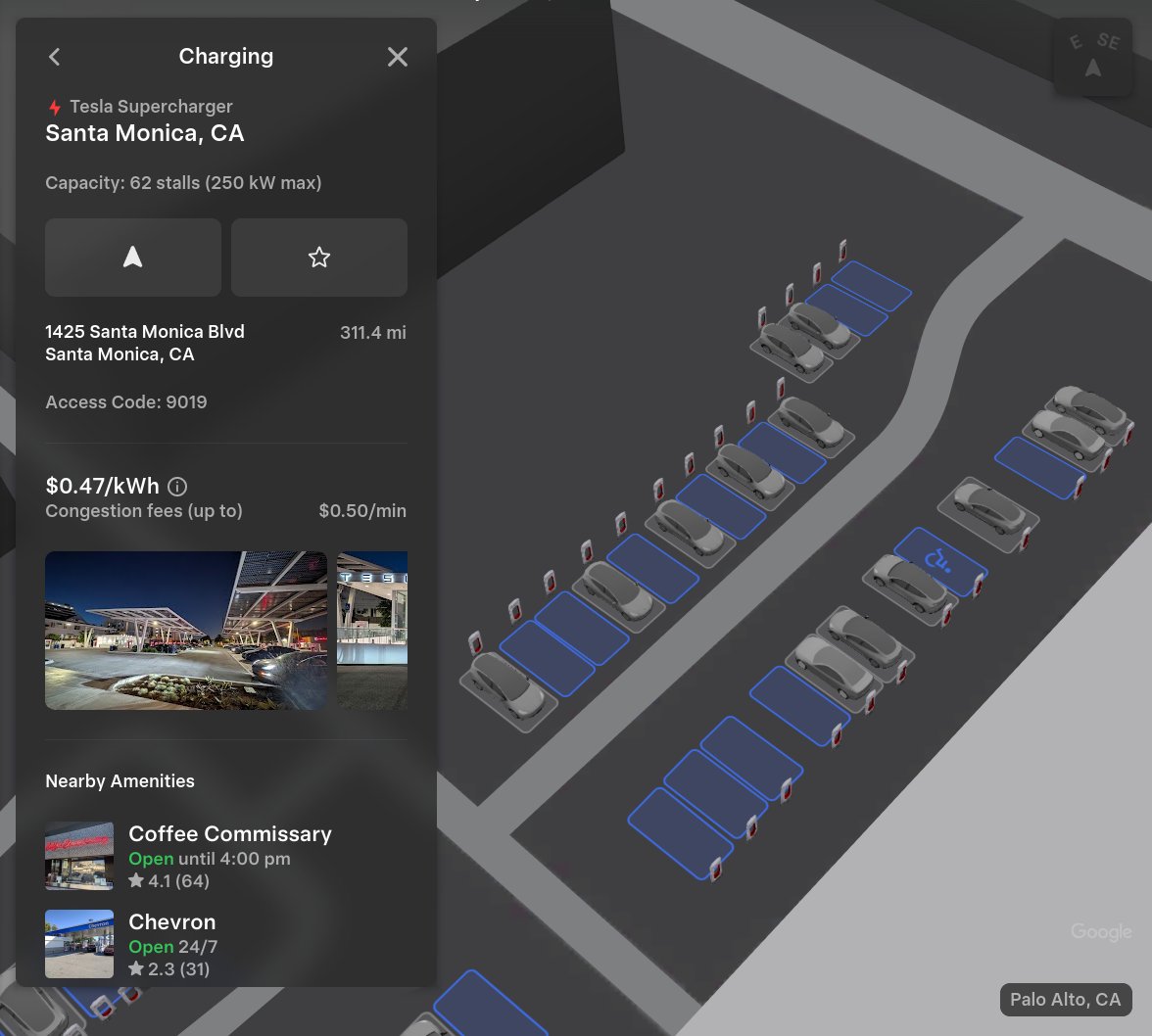
This is only available at a handful of locations currently, but it will expand to more Superchargers as it becomes more robust.
Automatic Carpool Lane Routing
Navigation will include an option to utilize carpool lanes. Your route will automatically choose the carpool lane when eligible.
Phone Left Behind Chime
If the in-car occupant detection system does not see anyone in the car and there is a phone key, or if a phone is left inside the cabin, your Tesla will chime a few seconds after the doors close.
Charge Limit Per Location
You can now save a charge limit for the current location while parked and it will be applied automatically the next time you charge there.
ISS Docking Simulator
In a SpaceX collaboration, Tesla has added this game to its in-car Arcade:
“Become an astronaut and prove your skills by docking with the International Space Station. Control & guide the rocket in this 3D docking simulator game using a set of controls based on actual interfaces used by NASA astronauts.”
Additional Improvements
-
Enable or disable wireless phone charging pads in Controls > Charging (S3XY) or Controls > Outlets & Mods (Cybertruck)
-
Add Spotify tracks to your queue right from the search screen & scroll through large Spotify playlists, albums, podcasts, audiobooks & your library seamlessly, without paging
-
Take the vibes up another level with rainbow colors during Rave Cave. Accent lights color will change along with the beats of your music. App Launcher > Toybox > Light Sync
-
Lock Sound now includes Light Cycle from Tron Mode. Toybox > Boombox > Lock Sound
What’s Missing
There are a handful of features we expected to see with the Holiday Update, but were not included.
Banish Feature
Tesla has been teasing the Banish functionality for quite a few years, but evidently, it is not quite there yet.
Banish will allow owners to get out of their vehicle at the entrance of their destination, and the car will go find a spot and park itself. Some refer to it as “Reverse Summon.”
Apple CarPlay
With all of the rumors regarding Apple CarPlay and then the evidence that Tesla was working to bring CarPlay to vehicles, we really expected it to come with the Holiday Update.
We’re not upset it’s not here, though. Tesla’s in-car UI is significantly better, at least in our opinion.
Parking Spot Selection
One of the biggest gripes about the new Arrival Features with Full Self-Driving v14 is that choosing a set parking spot is not available. This is especially frustrating for Tesla owners who rent or live in townhouse neighborhoods or apartment complexes with assigned parking.
Tesla seems to be working on this based on the release notes for v14.2, where it said future capabilities would include Parking Spot Selection.
News
Man credits Grok AI with saving his life after ER missed near-ruptured appendix
The AI flagged some of the man’s symptoms and urged him to return to the ER immediately and demand a CT scan.

A 49-year-old man has stated that xAI’s Grok ended up saving his life when the large language model identified a near-ruptured appendix that his first ER visit dismissed as acid reflux.
After being sent home from the ER, the man asked Grok to analyze his symptoms. The AI flagged some of the man’s symptoms and urged him to return immediately and demand a CT scan. The scan confirmed that something far worse than acid reflux was indeed going on.
Grok spotted what a doctor missed
In a post on Reddit, u/Tykjen noted that for 24 hours straight, he had a constant “razor-blade-level” abdominal pain that forced him into a fetal position. He had no fever or visible signs. He went to the ER, where a doctor pressed his soft belly, prescribed acid blockers, and sent him home.
The acid blockers didn’t work, and the man’s pain remained intense. He then decided to open a year-long chat he had with Grok and listed every detail that he was experiencing. The AI responded quickly. “Grok immediately flagged perforated ulcer or atypical appendicitis, told me the exact red-flag pattern I was describing, and basically said “go back right now and ask for a CT,” the man wrote in his post.
He copied Grok’s reasoning, returned to the ER, and insisted on the scan. The CT scan ultimately showed an inflamed appendix on the verge of rupture. Six hours later, the appendix was out. The man said the pain has completely vanished, and he woke up laughing under anesthesia. He was discharged the next day.
How a late-night conversation with Grok got me to demand the CT scan that saved my life from a ruptured appendix (December 2025)
byu/Tykjen ingrok
AI doctors could very well be welcomed
In the replies to his Reddit post, u/Tykjen further explained that he specifically avoided telling doctors that Grok, an AI, suggested he get a CT scan. “I did not tell them on the second visit that Grok recommended the CT scan. I had to lie. I told them my sister who’s a nurse told me to ask for the scan,” the man wrote.
One commenter noted that the use of AI in medicine will likely be welcomed, stating that “If AI could take doctors’ jobs one day, I will be happy. Doctors just don’t care anymore. It’s all a paycheck.” The Redditor replied with, “Sadly yes. That is what it felt like after the first visit. And the following night could have been my last.”
Elon Musk has been very optimistic about the potential of robots like Tesla Optimus in the medical field. Provided that they are able to achieve human-level articulation in their hands, and Tesla is able to bring down their cost through mass manufacturing, the era of AI-powered medical care could very well be closer than expected.
News
Tesla expands Model 3 lineup in Europe with most affordable variant yet
The Model 3 Standard still delivers more than 300 miles of range, potentially making it an attractive option for budget-conscious buyers.

Tesla has introduced a lower-priced Model 3 variant in Europe, expanding the lineup just two months after the vehicle’s U.S. debut. The Model 3 Standard still delivers more than 300 miles (480 km) of range, potentially making it an attractive option for budget-conscious buyers.
Tesla’s pricing strategy
The Model 3 Standard arrives as Tesla contends with declining registrations in several countries across Europe, where sales have not fully offset shifting consumer preferences. Many buyers have turned to options such as Volkswagen’s ID.3 and BYD’s Atto 3, both of which have benefited from aggressive pricing.
By removing select premium finishes and features, Tesla positioned the new Model 3 Standard as an “ultra-low cost of ownership” option of its all-electric sedan. Pricing comes in at €37,970 in Germany, NOK 330,056 in Norway, and SEK 449,990 in Sweden, depending on market. This places the Model 3 Standard well below the “premium” Model 3 trim, which starts at €45,970 in Germany.
Deliveries for the Standard model are expected to begin in the first quarter of 2026, giving Tesla an entry-level foothold in a segment that’s increasingly defined by sub-€40,000 offerings.
Tesla’s affordable vehicle push
The low-cost Model 3 follows October’s launch of a similarly positioned Model Y variant, signaling a broader shift in Tesla’s product strategy. While CEO Elon Musk has moved the company toward AI-driven initiatives such as robotaxis and humanoid robots, lower-priced vehicles remain necessary to support the company’s revenue in the near term.
Reports have indicated that Tesla previously abandoned plans for an all-new $25,000 EV, with the company opting to create cheaper versions of existing platforms instead. Analysts have flagged possible cannibalization of higher-margin models, but the move aims to counter an influx of aggressively priced entrants from China and Europe, many of which sell below $30,000. With the new Model 3 Standard, Tesla is reinforcing its volume strategy in Europe’s increasingly competitive EV landscape.
